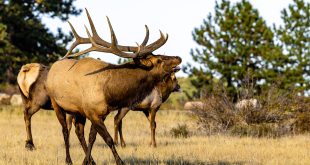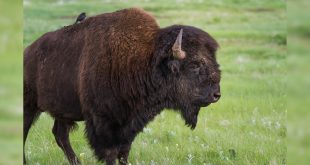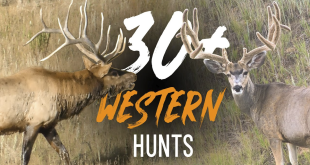
There is something special about glassing up a big old buck in a burn. They often are magnets to mule deer across the West with the new forage growth, something ecologists would call an “early successional habitat” that brings all the muley boys to the yard.
The natural cycle of burns and regrowth, then maturing before burning again has been all but lost in today’s era of fire suppression and lack of national forest logging.
When you ask any rural resident in the West what they think about wildfires in their backyard, you will quickly understand that there is little social tolerance for blazes that impact rural communities, such as property loss, “ruined” views and of course, possible loss of life.
There have been over 1.4 million acres of wildfire this year in Oregon alone. While a lot of those acres have occurred in areas with juniper encroachment and timber stands that needed to go, a lot of those burns that happen naturally these days also happen in sagebrush and cheatgrass-infested low country where big burns are not ideal for deer, either.
A new, ongoing study of mule deer’s fat levels in mechanical “burns” done by a company in Utah, may provide a new avenue for creating burn-like conditions in mule deer country without actually putting anything ablaze.
The project called the 106 Reforestation project, has produced does and fawns that are bigger and fatter than untreated areas. In an interview with Randy Larsen, the BYU wildlife biologist who oversees the study looking at these mule deer, which are much better suited to not only survive harsh winters but possibly throw more fawns on the ground in subsequent years.
Based on reporting by KSL in Utah, the state will be expanding the treatment efforts to create more mechanical burns on greater acreages than the study area. According to the company putting the technology on the ground, 106 Reforestation, the treatments they are doing are 2-3 times cheaper than other work that’s going on for aspen regeneration and work that simulates wildfire.
For mule deer hunters across the West, if this technology is as good and as cheap as touted in Utah so far, it could mean the difference between losing or growing mule deer populations for herds that have major problems with a lack of old-school fires. That is if these methods will be accepted and implemented on a landscape-impacting scale.
For the West’s typical timber country, where there’s smoke, there’s fire. Where there’s fire, there’s deer. Any chance to create possible habitat projects that mimic fire without possible damage to lives, property, and air quality is worth looking into further in my perspective.
 Eastmans' Official Blog | Mule Deer, Antelope, Elk Hunting and Bowhunting Magazine | Eastmans' Hunting Journals
Eastmans' Official Blog | Mule Deer, Antelope, Elk Hunting and Bowhunting Magazine | Eastmans' Hunting Journals




